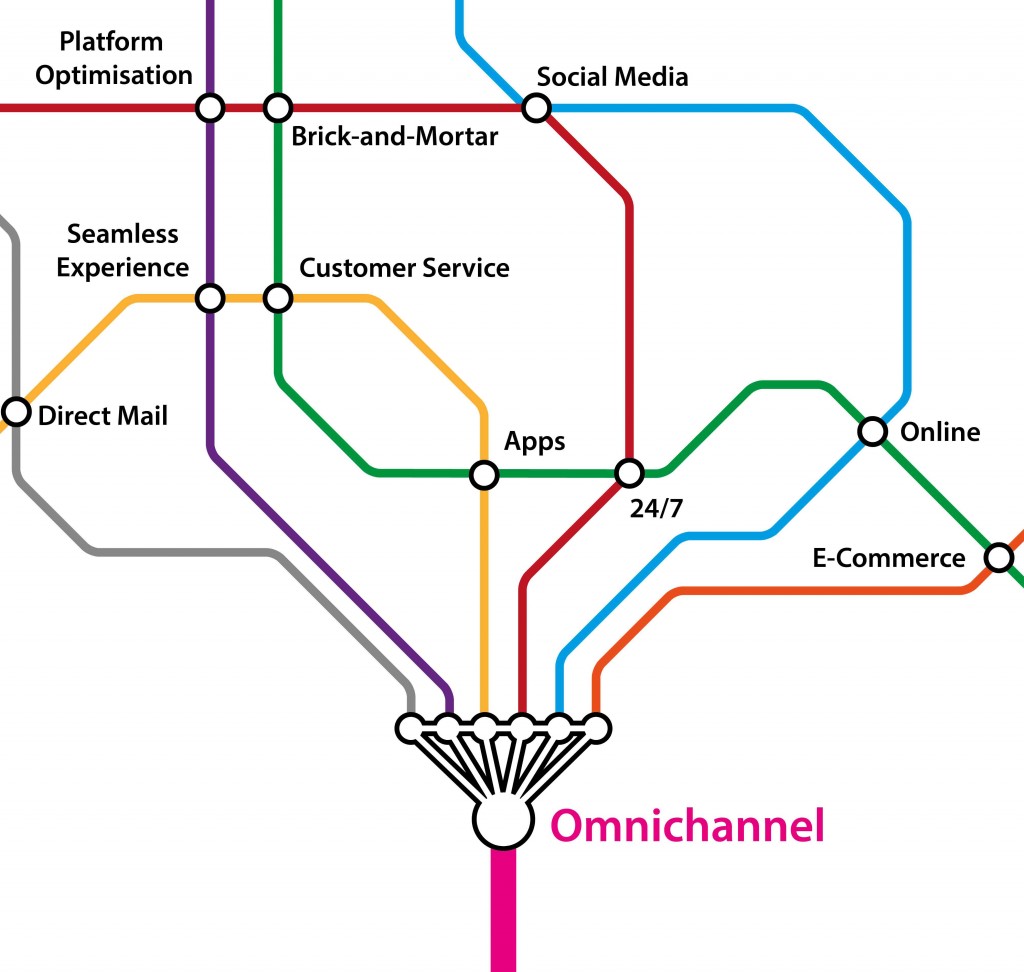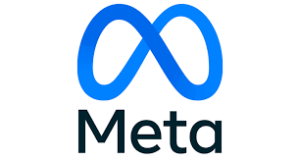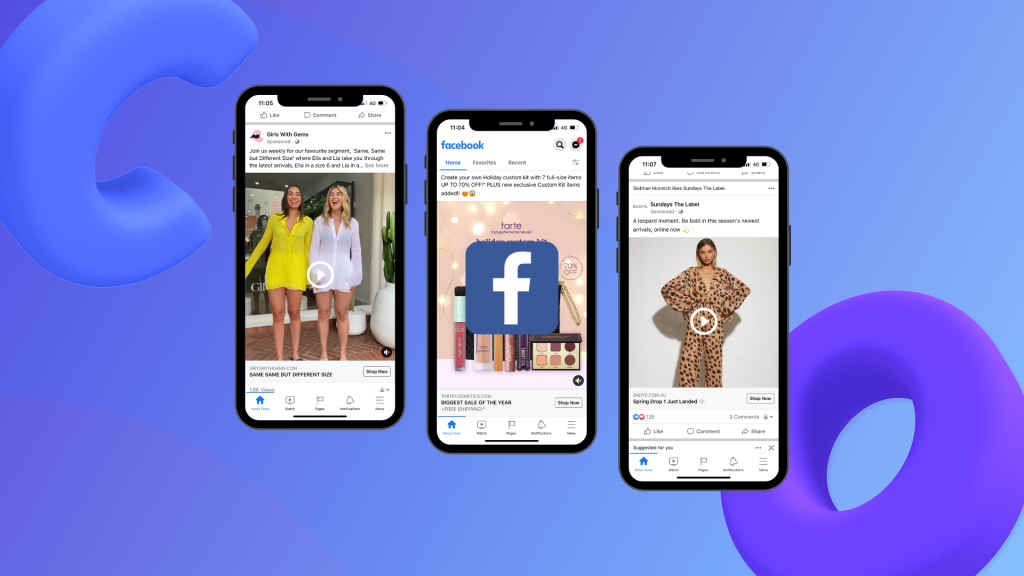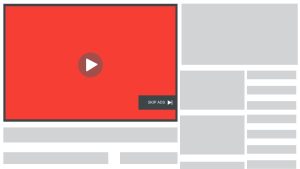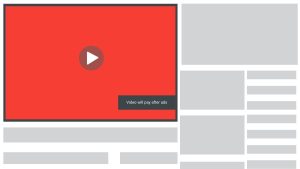October Digital Marketing Industry Updates
Google Updating Mobile Search Results Experience
Google’s search results pages for mobile are undergoing a massive shift. Google recently announced that they are introducing continuous scrolling for mobile search, so that instead of clicking through to the next page, or “See more results”, the behaviour is more likely to mimic how users experience scrolling through social media feeds. The news has gotten mixed reactions across the industry. However, the continuous scroll might prove beneficial for businesses. For one, it should allow users to continue to scroll through and find relevant content that may not immediately be among the results displayed at the top. Expect this change to continue to be rolled out in the coming weeks.
Changes Being Made to Facebook Ad Objectives
Facebook is making some changes to the current ad objectives present in Ads Manager. All ad objectives are now being grouped into six new objectives as a way to better communicate and collate similar ad objectives. The six new objectives include awareness, traffic, engagement, leads, sales, and app promotion. Facebook has mentioned that there will not be any changes made in terms of reporting of results, and any campaigns that are still currently running will remain active and won’t require any changes. It would be keen, however, for advertisers to familiarise themselves with the new schematics of Facebook’s ad objectives.
Professional Profiles Coming to Twitter!
They might have been a long time coming, however Professional Profiles are finally coming to Twitter. Beta testing started back in April, wherein Twitter invited a handful of businesses and creators to participate. Recently, they’ve opened up the Personal Profiles to more businesses. To apply for a Professional Profile, simply click through this link. The Professional Profile will display three modules: The About Module, which has your business and contact information, as well as hours of operation; the Shop Module, which will allow Twitter users to purchase on the platform; and the Newsletter Module, which can serve as a distribution channel for businesses on latest news and updates. Take note, though, that once accepted manually editing your profile is not readily available. Should you wish to make any changes, you will have to resubmit the application.
Advertiser Identity Verification Policy Updates on Google
To further improve the quality of advertising on its network, Google is updating their Advertiser Identity Verification Policy. The new policy won’t have a massive effect on advertisers except that they should expect to receive an email in the coming days regarding this. The verification process should be accomplished within 30 days, after which Google will pause all running campaigns until after completion. This change will allow Google to publicly disclose business information such as advertiser name change history, contact information, ad creatives, ads removed, accounts suspended, and the dates and locations that ads are being served.
Show Your Customers You’re Exactly What They Need!
Knowing what your potential customers and clients have in common is one of the strongest tools in your online arsenal.
What Are People Using?
Now this might seem like an unusual question, but we raise an underutilised question.; what device are your potential customers using to find you, and how is this information going to help you find them?
Mobile phones and tablets are pretty popular these days. In fact, Tobias Lutke reported that by 2014, mobile devices already accounted for over 50% of all E-commerce traffic. This isn’t just for taking photos of food or tweeting about the person in front of you at Subway that sneezed on the cashier. This shows in online search as well.
Nitzan Beck wrote for Banana Splash that from 2013 to 2015, organic search results via mobile devices grew from a share of 27% to a crazy 45% in the US alone. What does this mean? It means an enormous amount of people are looking at their phones and tablets, and they’re looking for you.
Why Should You Care?
If you search for a company on your mobile phone, and the website has not been optimised for mobile devices, your experience is miserable and you dislike the company as a result.
This example is what can, and likely will happen to a website that is not mobile friendly.
If you need to optimise your website to be more mobile friendly, there are some fantastic companies that can get the work done for you, such as GetMoreTraffic.
What To Do Next?
You went from a website that made people want to donate their eyes to science, to instead having the kind of website that people love. That’s all well and good, but what’s the next step?
The answer is simple. Google Analytics. This tool has the power and potential to really help you understand where your customers are coming from. Analytics opens the doors to complete control and understanding of who is finding you, what they’re doing once they’ve found you, and how to use this information to create return on your investment.
Age, occupation, location, language spoken; these are just some of the many points of information that people set up as part of their Google profiles, and are all points that you can use to both target and understand your audience. You then take this information, and you turn it into potentially your greatest asset; profitable data.
Now You’re Playing With Power
Google Analytics has told you who your online audience contains. This opens the door to strategies and methods that are backed with real data from real people who want to do business with you.
Perhaps you stock an anti-aging cream that removes wrinkles. With Google Analytics as your guide, you avoid showing to kids, and focus on your real audience.
Your range of ‘Learn to Speak Spanish’ cassette tapes needs some attention. With reassuring words from your Google Analytics data, you find an audience outside of Spain who are trekking through the Basque Country and Andalusia!
Unlimited Possibilites
You know how to find who you need to target, and you know you can offer a fantastic experience with your website. Surely this the end? No.
The tools you have available are now stronger than ever, especially since you’re backed up by all that great data about your audience, their interests and how to create positive engagement with you.
Across mobile devices, you can be as swift as a coursing river with AdWords and PPC advertising. You can have all of the strength of a great typhoon with organic listings and Search Engine Optimisation. You can harness all of the rage of a burning fire with Facebook advertising. With the right approach, and the right data, you can take on the world, rolling all of these into a digital marketing powerhouse.
Knowing who your audience is, and how your audience finds you, is not just a question. It’s your first line of offence in a digital marketing universe.
If you’d like to know more about making the most of your mobile audience, reach out to an industry professional like GetMoreTraffic – call today on 1300 332 256.
How To Successfully do Business in a Multi-Device World
I don’t know about you but I’m sitting here with four devices displaying a variety of entertainment/information. Don’t get me wrong, I’m a male, if sitcoms have taught me anything, and they have, I should not be able to multi-task like I seem to be doing right now. But I’m not going to lie, while I may have all of these devices open, I have to pause Netflix on the TV while I type this, despite the fact that I tried, oh geez did I try, to write this while a comedian peddled their wares in the background. I had to pause every so often because otherwise you’d be reading his material instead of mine (happens all too often).
I want you, yes, you, the person looking to sell their product to me, to sell it in a way that is both subtle, yet in my face enough that I’m impelled to purchase. I want you to place something in front of me that not only am I interested in, but that I am ready to purchase. I WANT to give you my money, why are you stopping me?
I can tell you why, because I understand mass psychology in a way that few do, including people who study psychology. I’m an online marketer. Day in and day out I watch trends online, behaviours of purchasers, and dummy spits of people who don’t purchase because they are annoyed that they have to fill in some innocuous yet tedious section of a form that stands in the way of them and their desire.
I’m logged in from the moment I wake up to the moment I go to sleep, literally. This is not hyperbole; I am literally writing this from my bed on my laptop at 11:05 pm (according to studies this makes me creative). I am listening to music on Google Play on my Android and will likely sing myself a lullaby by reading the latest posts of my favourite martial arts forum on my iPad. At all stages I am logged in to my Google account, so why don’t I know about you? If I’ve searched for your product on my mobile on the way home from work, why aren’t you tailoring a cross device strategy to target what I am interested in so when I am comfortable, you’re popping up to remind me that you’re there?
Don’t feel bad, this isn’t about shaming you, but really, I do need that new thing that you have on the market, so get it in front of me. Nobody is doing it, believe me, I’m seeking it, I want someone, anyone, to blow my mind with how they’ve tracked me from my mobile, to my laptop, to my tablet.
Pop up advertising used to be a dirty word, but it’s not (really it’s not). If you can slip something on one of my apps that can replace the usual crap which bears no semblance to my interests, based off my search history, I will be grateful. As much as I understand that my teeth will be whiter with [insert brand here] toothpaste, I do not care, but if you, with that thing that I searched for at home two days ago on YouTube, on my iPad, that then appeared on my darn smartphone with a notification of some sort, man, I’m buying.
I want you to provide me with a marketing strategy from the moment I wake up to the moment I sleep. I want to dream about your product in my possession. This will become easier and easier as more and more operating systems will be able to sustain technology from a variety of platforms. Don’t believe me? Windows 10, you know about it, there’s a pop up at the bottom of your screen that you’ve been putting off ‘upgrading’ for about a month and a bit, well, Microsoft has indicated it will run across smartphones, tablets, desktops, and even gaming consoles. Eventually apps will run on all devices, it will be the job of the operating system to accommodate the differing code. Hell, it’s happening now with all the cloud based services available to individuals and businesses.
There must be a billion possibilities when it comes to integration which are either in the works, in the development pipeline, or in the head of some genius just waiting to hit the stage. Are you prepared to take advantage of the upcoming technological shift? Do you have a website? Is it mobile optimised? If not, you already know you’re behind, but even if you have, I’m here to tell you that unfortunately you’re still running in a pack.
Don’t get left behind. Speak to Get More Traffic on 1300 332 256 and learn what we can do for your online marketing across multiple devices.
Mobile Technology, But Not As You Know It!
The suffix ‘-near me’ is becoming more prevalent in search queries on Google, having experienced a significant increase in the last year alone. As the world becomes more and more comfortable with the fact that the device in their pockets, and more importantly, the websites that they visit are becoming better to navigate on mobile devices, we will continue to see better and more targeted results from Google. Google is putting a lot of research and development into responding to more ‘human’ enquiries. Humans don’t talk in ‘keywords’; they ask questions, make statements, and the more Google is able to recognise these, the more in-depth its returning results will be.
Think about this, you’re driving down the road listening to the music on your device connected wirelessly through your car stereo (this alone is a ‘future is now’ scenario) when the music dims and your GPS navigation reminds you to turn left. As it does this, it also mentions that there is a sale on at that store you like on the same street. Intrigued, you pull up outside said store and wander in. You find that item which has been sitting on your ‘want’ list for quite some time and purchase it.
You jump back in the car with your shiny new item, keen to get home to test it out. You make your way to your final destination of which you have forgotten where you were going. You ask your phone, “where was I going?” and it replies, “to the supermarket for ingredients for the dinner party you’re throwing for your friends”.
You arrive at the supermarket – what are you going to buy? You speak into your phone, “what would you suggest for a dinner party of 15 friends that doesn’t include coriander as an ingredient?” and your phone supplies you with several options. You choose one and log in to the supermarket’s website, pushing your order direct. You saunter up to the counter and pay for your groceries with your phone at the mobile PayPoint. There’s a beep and you’re on your way home.
Believe it or not, this type of mobile device advanced development is 100% in the works. Google has purchased apps to integrate with Maps that will allow companies to push specials to you *as you approach their venue*, and you’ll be able to talk to your phone like you would to a human. Even omni-channel experiences are very much already here in our major department stores. Search is going to change as we know it and it is vital that your business is adaptive and fluid enough to be able to handle that change. Get in touch with Get More Traffic on 1300 332 256.
Are Myer overdue with their ‘New Myer’ strategy, or just fashionably late?
Myer have recently announced their new ‘New Myer’ strategy, with emphasis on omni-channel pathways and marketing initiatives to leverage relevant customer behaviours in the face of strong digital competition from retail rivals at home and overseas. But have Myer come to the game too late? With a predicted $600 million, five year transformation agenda, including $200 million into omni-channel capabilities, the new strategy undoubtedly takes on-board the changing space of consumer spending and behaviour. Though when taking a look at competitors overseas, it seems to be a serious game of catch-up.
There is an ongoing trend which is mirrored across many industries in Australia when it comes to successfully investing in technology and digital transformations. While Australian’s are some of the fastest consumers of new digital technologies, Australian businesses are slow on the uptake. It’s very much a case of ‘let’s wait and see just how much of an impact this will actually have’ and commonly, businesses finding themselves left far behind due to exactly that.
Modern retail is an online and offline journey, but it is increasingly apparent that if it’s not online, then it may as well not exist, particularly when it comes to ‘fashion’. In 2014 the stark truth is that Australian retail giants Myer and David Jones could only account online sales for approximately 2% of total sales. For those with their eyes on the ball, the massive opportunity this presents small to medium sized businesses in Australia is huge. For those which already have a good online E-commerce presence, then the customers are there for the taking. For those who are coming to the realisation that now is the time to move, they can guarantee that it won’t take five years and $600 million to establish themselves online.
There are exceptions to Myer’s blunder. Many businesses saw the writing on the wall after the GFC and realised that innovation was needed to pick up business again. With technology producing smart mobile devices and companies like Google driving online relevancy, data-driven marketing has reshaped the way businesses must communicate and connect with their customers. In Australia, brands such as Country Road and Lorna Jane are shining examples of what positive omni-channel experiences can do not just for revenue, profit and growth, but brand loyalty and advocacy.
So in the face of retail globalisation, digital disruption and consumer expectations, Myer’s new strategy, while a welcome sight, will have to wait a while to see the fruits of its harvest. With the busy Christmas shopping season quickly approaching, and with Myer’s notorious online system outage one week out from Christmas Day in 2014, consumers and industry watchers will have to see whether small to medium businesses will take advantage of the online opportunity and good fortune. If you’re looking to update your e-Commerce strategy in time for the Holiday Season this year, then get in touch with Get More Traffic today on 1300 332 256.
Your Road to Mobile Optimisation
How important is your smartphone to you? If you’re anything like me, I think losing my smartphone would stress me out a whole lot more than losing my wallet! If you had asked me the same question ten years ago though, the answer would have been very different. The point I’m trying to make is our smartphones are arguably the most important devices we carry around with us. We put so much information in them. We heavily rely on them to communicate with others via text, phone, email and social media and, to keep up with news within our social circles to international events. We have become so accustomed to getting the information we need and desire now.

